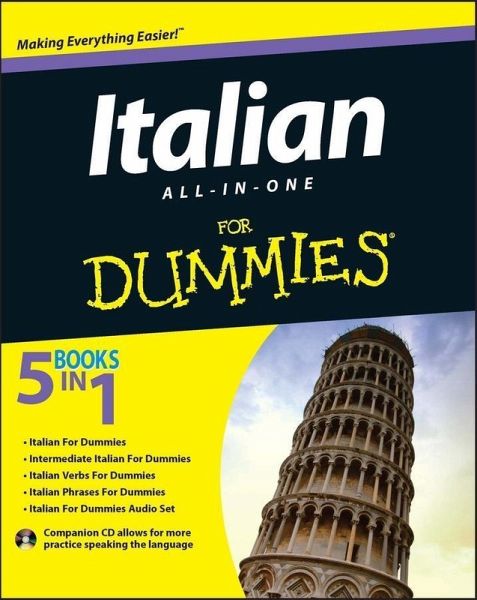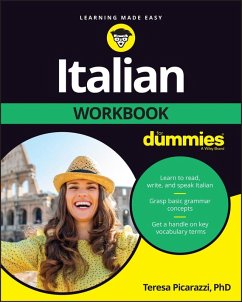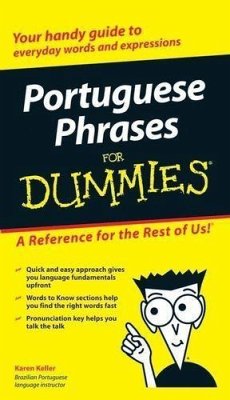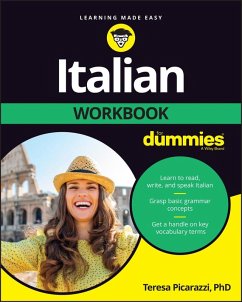
Italian All-in-One For Dummies (eBook, PDF)
Versandkostenfrei!
Sofort per Download lieferbar
15,99 €
inkl. MwSt.
Weitere Ausgaben:

PAYBACK Punkte
0 °P sammeln!
Learn to speak Italian like a native? Easy. Italian All-in-One For Dummies appeals to those readers looking for a comprehensive, all-encompassing guide to mastering the Italian language. It contains content from all For Dummies Italian language instruction titles, including Italian For Dummies, Intermediate Italian For Dummies, Italian Verbs For Dummies, Italian Phrases For Dummies, Italian Grammar For Dummies, and Italian For Dummies Audio Set. * Offers readers interested in learning Italian a valuable reference to all aspects of this popular language * The content appeals to students, travel...
Learn to speak Italian like a native? Easy. Italian All-in-One For Dummies appeals to those readers looking for a comprehensive, all-encompassing guide to mastering the Italian language. It contains content from all For Dummies Italian language instruction titles, including Italian For Dummies, Intermediate Italian For Dummies, Italian Verbs For Dummies, Italian Phrases For Dummies, Italian Grammar For Dummies, and Italian For Dummies Audio Set. * Offers readers interested in learning Italian a valuable reference to all aspects of this popular language * The content appeals to students, travelers, and businesspeople who visit Italian-speaking countries * An online companion site allows you to download audio tracks allows for more practice opportunities, as well as additional content empowering you to speak Italian like a native Whether you're a pure beginner or have some familiarity with the language, Italian All-in-One For Dummies, with downloadable audio practice online, is your ticket to speaking, and writing, Italian.
Dieser Download kann aus rechtlichen Gründen nur mit Rechnungsadresse in A, B, BG, CY, CZ, D, DK, EW, E, FIN, F, GR, HR, H, IRL, I, LT, L, LR, M, NL, PL, P, R, S, SLO, SK ausgeliefert werden.












